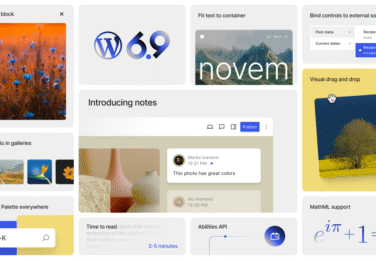Third Party Integration with WordPress

Table of Content
In Australia’s fast-paced digital world, WordPress is a top choice for businesses wanting a strong online footprint. As websites grow, linking with third-party services through APIs is key. Imagine running a booming e-commerce site on WordPress but needing better payment and customer interaction. That’s where api integration comes in, opening up new opportunities for your business.
With api development and WordPress integration, you can link your site with top third-party services. This includes payment gateways, social media, email marketing, and analytics tools. Imagine handling payments smoothly, engaging with customers everywhere, and understanding your site’s performance better – all from your WordPress dashboard.
In this article, we’ll look at the benefits of linking third-party services with WordPress. We’ll cover important terms and guide you on setting up api connections. We’ll also share tips on keeping your integrations safe, testing, and growing your site. Plus, we’ll show how Australian businesses are using APIs to succeed online.
Key Takeaways
- APIs let WordPress sites connect with third-party services, improving both functionality and user experience.
- Common api integrations include payment gateways, social media, email marketing, and analytics tools.
- Proper api development and WordPress integration need understanding key concepts, choosing the right API, and following best practices for security and performance.
- WordPress plugins and custom coding are two ways to set up api connections.
- Real-world examples show the success of api integration in e-commerce, social media, and customer support for Australian businesses.
Understanding API Integration in WordPress
API integration is key in web development, and WordPress is no different. It lets developers add new features and connect with other services easily. We’ll explore how API integration works in WordPress.
An API is like a bridge between apps, letting them talk and share data. In WordPress, it connects sites with services like payment gateways and social media. This adds cool features for users.
There are two ways to integrate APIs in WordPress: using plugins or coding yourself. Many services have plugins that make it easy. But, coding gives you more control and flexibility.
To integrate an API, you need to know about API endpoints, how to log in, and data formats. API endpoints are URLs for talking to the API. Logging in securely is crucial, often using API keys or OAuth. Data formats like JSON or XML show how data is shared.
Here’s a quick overview of common API terms:
- API Endpoint: The URL used to access the API
- API Key: A unique identifier used for authentication
- OAuth: An authentication protocol for secure API access
- JSON: A lightweight data interchange format
- REST API: A popular architectural style for building APIs
Knowing these basics and using WordPress plugins or coding, developers can add new services to their sites. This makes sites more useful, efficient, and enjoyable for users.
Benefits of Integrating Third-Party Services with WordPress
Using APIs to link third-party services with WordPress can really boost your site’s performance. It makes your site more useful and enjoyable for visitors. This integration can also make your business run smoother.
Here are some main advantages of adding third-party services to your WordPress site:
Enhancing Functionality and User Experience
Adding third-party services can make your WordPress site more powerful. For instance, a live chat feature can offer quick help to customers. Social media links let users share your content easily.
Streamlining Business Processes
APIs can make your business tasks easier and faster. You can link a payment system to take orders without hassle. Or connect your site to a CRM to better manage customer interactions.
API integrations are the key to unlocking the full potential of your WordPress site, enabling you to deliver a seamless user experience and optimise your business processes.
Leveraging Specialised Services
Third-party services bring unique features that are hard to create yourself. By using these services, you can focus on your main business. Here are some examples:
| Service | Benefit |
|---|---|
| Email Marketing | Engage with your audience and send targeted campaigns |
| Analytics | Gain insights into user behaviour and optimise your site |
| Shipping and Logistics | Automate order fulfilment and tracking for e-commerce sites |
By using API integrations, you can make your WordPress site more complete and friendly. It meets your specific business needs.
Common Third-Party Integrations for WordPress Sites
WordPress is the top content management system, offering many ways to boost your site. You can link your WordPress site with other services. This improves user experience, makes business tasks easier, and uses special tools. Let’s look at some common third-party integrations for WordPress sites.
Payment Gateways
For online shops, adding payment gateways is key for safe transactions. Popular ones for WordPress include:
- PayPal
- Stripe
- Square
- Braintree
These gateways work well with plugins like WooCommerce. They let customers buy directly on your site.
Social Media Platforms
Connecting your WordPress site with social media is great. It lets you:
- Show social media feeds on your site
- Add social sharing buttons
- Let users log in with social media
Plugins like Social Media Share Buttons & Social Sharing Icons, Smash Balloon Social Photo Feed, and Social Login make this easy.
Email Marketing Services
Adding email marketing services to your WordPress site helps grow your list. It lets you send newsletters and automate emails. Some top services include:
| Service | Key Features |
|---|---|
| Mailchimp | List management, email templates, automation |
| Constant Contact | Drag-and-drop email builder, list segmentation |
| AWeber | Autoresponders, sign-up forms, analytics |
Analytics and Tracking Tools
Analytics tools are vital for understanding your site’s performance. Google Analytics is the most used, offering detailed data. Other top tools are:
- Matomo (formerly Piwik)
- Clicky
- Mixpanel
Analytics tools help you make informed decisions and improve your online presence.
Using these integrations can make your WordPress site better. It helps engage your audience and meet your business goals.
API Integration: Key Concepts and Terminology
Exploring API integration for your WordPress site? It’s key to know the basics. Grasping these concepts will boost your confidence and guide your decisions when using third-party services.
An API, or Application Programming Interface, is a set of rules for apps to talk to each other. It’s like a messenger, making it easy for systems to share data and work together.
- Endpoints: Specific URLs for API requests and responses.
- HTTP Methods: Actions like GET, POST, PUT, and DELETE on API resources.
- Authentication: Verifying who’s making the API request for secure access.
- API Keys: Unique IDs for authenticating and authorising API requests.
- JSON: A simple data format used in API responses.
Want to learn more about api terminology? Check out an api glossary. These tools offer detailed explanations of API terms, helping you understand API integration better.
| Term | Definition |
|---|---|
| REST API | A popular style for designing APIs, focusing on simplicity and growth. |
| OAuth | An authorisation method for third-party apps to access user data without passwords. |
| Webhook | An automated message sent from an API to a URL when an event happens. |
Mastering API concepts and terminology is the key to unlocking the full potential of third-party integrations for your WordPress site.
By learning these basics and using api glossaries, you’ll be ready to tackle API integration. This will help you improve your WordPress site’s features and user experience.
Choosing the Right API for Your WordPress Integration
Choosing the right API is key when adding third-party services to your WordPress site. You need to look at several important factors. These will affect how well your integration works, its performance, and its security.
Evaluating API Documentation and Support
First, check the API’s documentation. Good documentation makes it easy to use the API. It should have clear instructions and examples. Also, look for FAQs and tutorials.
It’s also important to see how well the API provider supports you. Good support can help a lot when you run into problems.
Considering API Limitations and Pricing
APIs have limits and prices that can affect your project. Look at the API pricing to understand costs. Make sure the API fits your needs now and in the future.
Also, know about any limits or restrictions. These can impact how well your integration works.
Assessing API Security and Reliability
API security is very important. Check how the API protects your data. Look for standard security like OAuth or JWT.
Also, check the API’s reliability. Look at uptime, performance, and any past issues. A reliable API is crucial for a good user experience.
Use a comparison table to help choose an API:
| API | Documentation Quality | Pricing Model | Security Features | Reliability (Uptime) |
|---|---|---|---|---|
| API A | Excellent | Pay-per-use | OAuth, SSL | 99.9% |
| API B | Good | Monthly subscription | API key, SSL | 99.5% |
| API C | Fair | Free (limited) | SSL | 98.5% |
By looking at API documentation, pricing, security, and reliability, you can choose wisely. The right API will make your integration successful and improve your website.
Setting Up API Connections in WordPress
Adding third-party services to your WordPress site through API connections can make it more useful and enjoyable. You can do this in two ways: using special plugins or coding it yourself.

Using WordPress Plugins for API Integration
Using plugins is a simple way to link APIs with your WordPress site. These API plugins have easy-to-use interfaces and quick setup processes. They help you connect your site with many third-party services. Some top plugins for this include:
- WP API Manager
- API Integration for WooCommerce
- Zapier for WordPress
- API4WP
When picking a plugin, think about a few things. Check if it works with your WordPress version. Also, see if it matches the service you want to use. And, look at the support and help the plugin offers.
Custom Coding API Integrations
For more complex or special integrations, you might need to write your own code. This method gives you more control but needs you to know a lot about WordPress and the API.
Custom coding API integrations allows you to tailor the connection to your specific needs and ensure seamless integration with your existing WordPress setup.
When coding an API integration, follow these steps:
- Read the API’s documentation well to know its endpoints, how to log in, and data formats.
- Make a custom plugin or change your theme’s functions.php file to add the needed code.
- Use WordPress’ HTTP API (wp_remote_get, wp_remote_post, etc.) to send requests and handle responses.
- Make sure to handle errors and log them to solve any problems.
| Integration Method | Ease of Use | Flexibility |
|---|---|---|
| WordPress Plugins | High | Moderate |
| Custom Coding | Low | High |
Choosing between plugins and coding depends on what you need, your skills, and how complex the integration is. By thinking about your options and following good practices, you can set up API connections in WordPress. This will help you use third-party services to their fullest potential.
Securing Your WordPress API Integrations
When you add APIs to your WordPress site, keeping your data safe is key. Good api security practices protect your site and earn your users’ trust. Here, we’ll cover important steps to make your WordPress API integrations secure.
Implementing API Authentication and Authorisation
API authentication and authorisation are vital for security. They check who’s accessing your API and what they can do. This stops unwanted access to your data.
There are several ways to authenticate APIs:
- OAuth 2.0: A popular method for secure access.
- API Keys: Unique codes for each client to identify themselves.
- JSON Web Tokens (JWT): Small, secure tokens for data exchange.
Protecting Sensitive Data in Transit and Storage
Keeping sensitive data safe is crucial. Make sure it’s encrypted when it’s moving or stored. Use HTTPS to protect data as it travels between your site and the API server.
For storing sensitive data, follow these tips:
| Best Practice | Description |
|---|---|
| Encryption at Rest | Use strong encryption for data in your database. |
| Secure Data Storage | Keep sensitive data in safe, controlled areas. |
| Data Minimisation | Only collect and store data you really need. |
API security is an ongoing effort. Always check and update your security to stay safe from threats.
Strong api authentication, authorisation, and data protection make your WordPress API integrations secure. Keep your security up-to-date and watch for any unusual activity.
Testing and Debugging API Integrations
When you add APIs to your WordPress site, it’s vital to test and debug them well. This ensures everything works smoothly and efficiently. By using the right methods for testing and debugging, you can find and fix problems early on.
To test your API integrations well, try these methods:
- Unit testing: Check if each API part works as it should
- Integration testing: See how the API works with your WordPress site and other systems
- End-to-end testing: Test the API in real-world situations to make sure it works right
When you’re testing APIs, focus on these key areas:
| Area | Description |
|---|---|
| Functionality | Make sure the API gives the right data and does what it’s supposed to |
| Performance | Check how fast the API is, how much data it can handle, and how it scales |
| Security | Check if the API has good security, like login checks and data protection |
| Error handling | See how the API deals with bad requests, special cases, and errors |
Debugging APIs is key to solving problems during integration. Use tools like Postman or cURL to send requests and check the answers. WordPress plugins like WP REST API Log can also help track and fix API issues.
- Turn on logging and make it detailed to get more info about API requests and answers
- Use breakpoints and step-through debugging to find where problems are
- Look at error messages and status codes to find the main cause of issues
- Work with API providers and use their help and guides
Good API testing and debugging are key to making reliable and efficient integrations. They improve your WordPress site’s functionality and user experience.
By being proactive with API testing and debugging, you can make sure your WordPress integrations work as planned. This gives your users a smooth and great experience.
Best Practices for Managing API Integrations in WordPress
Managing API integrations in WordPress needs a proactive approach. This ensures smooth functionality, security, and performance. By following best practices, you can improve your API management and keep your integration environment stable and efficient.

Keeping API Credentials Secure
Keeping your API credentials safe is key. These include API keys, tokens, and passwords. They give access to important data and functions. Here’s how to keep them secure:
- Store API credentials securely, using encryption or environment variables
- Avoid hardcoding credentials directly into your WordPress files
- Regularly rotate and update credentials, especially if you suspect a breach
“Security is not a product, but a process. It’s about risk management, not risk elimination.” – Bruce Schneier
Monitoring API Performance and Uptime
API monitoring is vital for reliable and high-performance WordPress integrations. It helps spot and fix issues before they affect users. Use:
- Real-time monitoring tools to track API response times and error rates
- Alerts and notifications to inform you of any performance degradation or downtime
- Regular testing and load testing to assess API scalability and reliability
Updating and Maintaining API Integrations
APIs change often, with new features and security updates. To keep your WordPress integrations up-to-date and secure, follow a regular API maintenance routine:
- Stay informed about API updates, changelogs, and deprecations
- Regularly update your WordPress plugins and custom code to leverage the latest API versions
- Conduct thorough testing after each update to identify and resolve any compatibility issues
By following these best practices for API management, you can ensure your WordPress API integrations work well over time. This gives your users a smooth experience.
Scaling Your WordPress Site with API Integrations
As your business grows, your WordPress site needs to keep up with more traffic and demand. API integrations are a great way to scale your site’s performance and features. They let you use third-party services through APIs, boosting your site’s abilities without overloading your server.
API integrations connect you to scalable and reliable platforms. You don’t have to build and maintain complex features yourself. Instead, you can use services that handle big data and traffic well. This lets you focus on your main business while keeping your site fast and responsive.
Here are some ways API integrations can help scale your WordPress site:
- Offload tasks like video processing or image optimisation to third-party services.
- Use content delivery networks (CDNs) to distribute your site’s assets globally, reducing latency and improving load times.
- Leverage scalable storage solutions like Amazon S3 to host and serve large files, ensuring high availability and performance.
- Utilise caching mechanisms provided by API integrations to store frequently accessed data, minimising database queries and improving site speed.
When choosing API integrations for scalability, consider these factors:
| Factor | Description |
|---|---|
| Scalability | Ensure the API can handle your site’s growing traffic and data volume. |
| Performance | Look for APIs that prioritise fast response times and efficient data transfer. |
| Reliability | Choose APIs with a proven track record of uptime and robust infrastructure. |
| Documentation | Well-documented APIs make integration and maintenance easier. |
A scalable WordPress site is not just about handling traffic spikes, but also about delivering a consistently fast and smooth user experience.
By strategically integrating with APIs, you can optimise your WordPress site’s performance, handle increased traffic, and accommodate your business’s growth. Embrace the power of api scalability to take your site to the next level.
Real-World Examples of Successful API Integrations in WordPress
API integrations in WordPress have changed how businesses work online. They connect third-party services with WordPress sites. This makes things work better, streamlines processes, and gives users a great experience. Let’s look at some api case studies that show how powerful API integrations are in WordPress.
Case Study 1: E-commerce Store Integration
API integration is key for ecommerce integration in WordPress. It links WordPress sites with e-commerce platforms like WooCommerce or Shopify. This lets businesses manage their online stores, handle payments, and keep track of stock easily.
For example, WooCommerce and WordPress work together well. Store owners can manage products, orders, and customer data from their WordPress dashboard.
Case Study 2: Social Media Feed Integration
Social media integration is another big use for API integrations in WordPress. It connects WordPress sites with social media platforms like Facebook, Twitter, or Instagram. This shows the latest posts, images, and videos on websites.
It keeps content fresh and encourages visitors to interact with social media. For instance, Instagram and WordPress integration lets businesses show their Instagram feeds on websites. This boosts brand visibility and user engagement.
Case Study 3: Customer Support Chat Integration
Customer support integration is a big deal for businesses wanting to serve customers well. Integrating live chat services like Zendesk or Intercom with WordPress sites offers real-time support. It answers questions and solves problems quickly.
This improves the user experience, builds trust, and loyalty. For example, Intercom and WordPress integration lets businesses chat with visitors, get feedback, and offer custom support.
“API integrations have transformed the way we do business online. By connecting our WordPress site with third-party services, we’ve been able to streamline our operations, enhance our user experience, and drive significant growth.”
These api case studies show the huge potential of API integrations in WordPress. They help with ecommerce integration, social media integration, and customer support integration. Businesses can make dynamic, feature-rich websites that offer great value to users.
Conclusion
In this article, we’ve looked into WordPress API integration and its impact on websites. It lets you add new features and make your site more user-friendly. You can connect with services like payment gateways, social media, and analytics tools.
To integrate APIs well, follow some key steps. Check the API’s documentation and understand its limits and costs. Use WordPress plugins or custom code to connect services. Also, make sure your site is secure by protecting data and testing your integrations.
APIs help your WordPress site grow and work better. They let you manage user data safely and keep your site running smoothly. The examples in this article show how APIs can change businesses, from online shops to social media and customer support.
Starting with API integration might seem hard, but it’s worth it. With the right services and practices, your WordPress site can improve a lot. If you need help, our team is ready to assist. Contact us to learn how we can help with your API integration.










